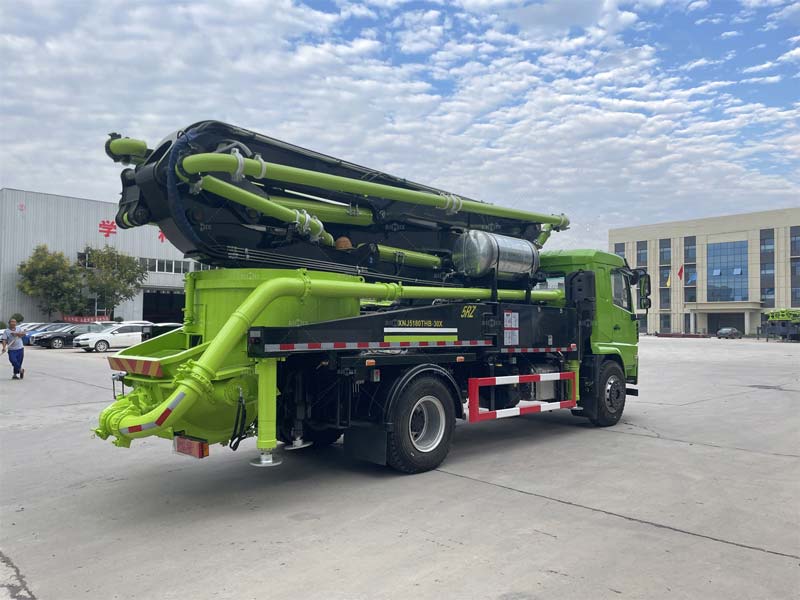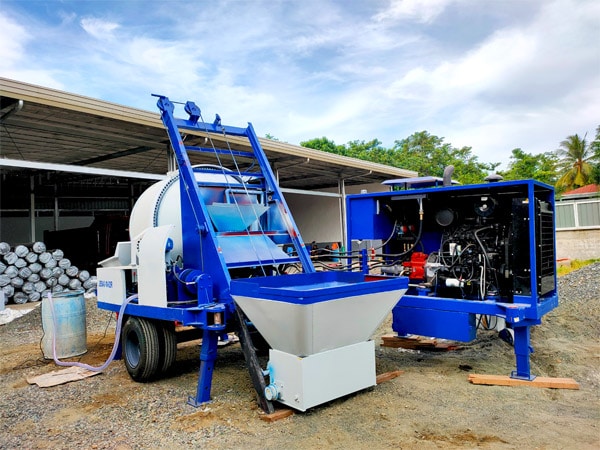Precision in construction projects hinges on making informed choices, especially when it comes to selecting between boom pumps and mixing pumps. Each plays a distinct role in the concrete delivery process, and understanding their nuances is pivotal for project success.
The Concrete Dynamics of Boom Pumps
1. Advanced Reach and Flexibility
The first aspect to consider when evaluating boom pumps is their unparalleled reach and flexibility. These hydraulic marvels are equipped with extendable arms, capable of reaching considerable heights and navigating complex construction sites with ease. The ability to precisely place concrete in challenging locations is a boon for projects with intricate designs or constrained spaces.
2. Efficient Pouring for High-Rise Structures
Boom pumps shine in scenarios where verticality is paramount. For high-rise structures, the strategic deployment of a boom pump ensures a continuous, controlled pour, minimizing the risk of material segregation and enhancing the structural integrity of the final construction. This efficiency can significantly accelerate project timelines.

3. Tailored for Large-Scale Projects
Large-scale construction projects demand not only quantity but also precision in concrete placement. Boom pumps excel in delivering substantial volumes of concrete swiftly, making them indispensable for expansive ventures like commercial buildings, bridges, or infrastructure projects. Their adaptability to varying project scales adds versatility, making them a preferred choice.
Mixing Pumps: The Blend of Consistency and Control
1. Homogeneous Mixes for Quality Assurance
When the emphasis is on achieving a consistent mix of concrete, mixing pumps take the spotlight. The concrete mixing pump boasts integrated mixers that ensure a homogeneous blend of materials, crucial for projects demanding a high degree of quality assurance. The controlled mixing process minimizes material waste and enhances overall efficiency.
2. On-Site Mixing for Real-Time Adjustments
One key advantage of mixing pumps is their ability to concoct concrete blends on-site. This feature enables real-time adjustments to the mix composition, catering to specific project requirements. It’s a game-changer when dealing with projects that demand varying concrete specifications throughout different phases.

3. Ideal for Small to Medium-Sized Projects
Mixing pumps come into their own in smaller to medium-sized projects where precision in material blending and controlled pouring are paramount. Whether it’s residential constructions, pavements, or renovation projects, the adaptability of mixing pumps to diverse concrete requirements positions them as an ideal choice. You can check what kinds of projects it can be applied for on this page: https://concretemixerwithpump.com/concrete-mixer-with-pump-for-sale/.
Strategic Decision-Making: Project Considerations
1. Project Scale and Complexity
The choice between boom pumps and mixing pumps fundamentally hinges on the scale and complexity of the project at hand. For expansive ventures with intricate designs and substantial concrete requirements, boom pumps offer unparalleled reach and efficiency. Conversely, mixing pumps excel in smaller to medium-sized projects where consistent material blending is critical.
2. Vertical vs. Horizontal Requirements
Verticality is a decisive factor in choosing between these pumping technologies. For projects demanding precise concrete placement at significant heights, boom pumps are the go-to solution. On the other hand, mixing pumps shine in scenarios where horizontal reach and controlled blending take precedence over height.
3. Budgetary Considerations and Operational Efficiency
Budget constraints and operational efficiency should not be overlooked in the decision-making process. While truck-mounted concrete pumps might require a higher initial investment, their speed and efficiency can offset costs in large-scale projects. Mixing pumps, focusing on controlled blending, may prove more cost-effective for smaller projects with varied concrete specifications.
In conclusion, the choice between boom pumps and mixing pumps is a critical decision that demands a meticulous evaluation of project requirements. By decoding the dynamics of each pumping technology and aligning them with the specific needs of the project, construction professionals can elevate precision, efficiency, and ultimately, project success.